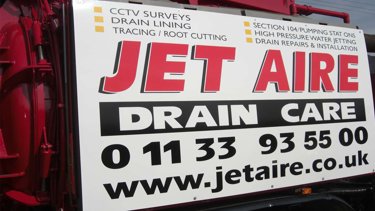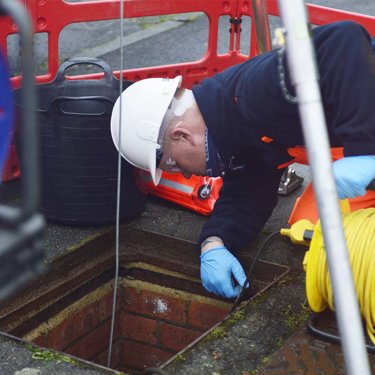Failure to plan could cause a major drain on your resources
13 November 2017
‘Downtime’ is a word that sends shivers down the spine of MDs and Ops Directors. The first half of the word is the part that unsettles the most: for businesses it means productivity down, turnover down and revenue down.

As a result, management responsible for Risk, Facilities and Operations are tasked with planning regular health checks and maintenance for a range of critical resources, from IT infrastructure to manufacturing equipment. However, one vital element is often overlooked, largely because it’s out of sight and out of mind: drainage. Unlike ageing manufacturing machinery, or a dysfunctional network connection, the faulty condition of a drain is not immediately apparent. By the time a corroded pipe has made its presence felt, it’s usually too late to minimise the impact.
That’s why planned drainage maintenance is essential for any business or organisation seeking to minimise downtime – investing in pre-emptive measures can avert hugely negative impacts further down the line. Any experienced project manager will tell you that identifying potential future risks and implementing measures to prevent or mitigate them is vital to cost and operational efficiency.
We have encountered many instances of businesses that were unaware or unconvinced of these long-term benefits and have paid a heavy price. In certain cases they have required us to adopt the most painstaking measures to complete drainage repairs during live production to avoid downtime. In one example, a soft drinks manufacturer asked us to create a lengthy diversion within the drainage network, constructing an auxiliary pipe route to enable uninterrupted production whilst remedial works were carried out. You don’t need to be a highly qualified project or programme manager to appreciate that such a solution is neither cost nor time efficient.
Having assessed their drainage system and the level of deterioration, we estimated that carrying out preventative maintenance eight years prior to the problem would have saved the company costs totalling well into seven figures. It certainly represents a valuable cautionary tale for breweries and soft drinks manufactures as their products have particularly abrasive properties which can accelerate the decay of pipes.
The example also highlighted the environmental impact caused by a lack of planning: when their problem arose, the ground became saturated with soft drink, polluting the immediate surroundings. Over the years there have been some notable cases of businesses and utility companies fined millions by the Environmental Agency for unnecessary pollution which has killed local wildlife. Negligence and failure to meet environmental compliance can be punishing to finances as well as reputations. Any sites located close to rivers present an especially high risk of severe environmental damage caused by drainage failure.
Such examples have alerted many organisations to the value of preventative measures and we are now seeing a rise in demand for planned maintenance across a wide range of sectors. A soap factory in Yorkshire has commissioned Jet Aire to clean drains twice a year in order to improve production and meet environmental compliance whilst Esseco, a chemical manufacturer in Wakefield, now uses scheduled visits from Jet Aire to keep surface water clean around the site. We also work with our partner contractor, Seymour Civil Engineering, to provide a comprehensive framework for prevention as part of a wider policy of ongoing estate maintenance for various utility and facilities management companies.
The basic template for long-term preventative maintenance involves an initial CCTV survey of the drainage system to identify a list of issues and rate their severity and urgency on a scale of 1 to 5 (with 5 being the most severe). Issues rated 1 to 3 can be monitored by an ongoing maintenance programme and a remedial schedule can be planned to accommodate budgets over a longer period, often spanning different financial years. Many clients find this stepped remediation very helpful in managing their costs. Issues rated 4 are considered to be more urgent and issues rated 5 require immediate attention.
In many cases, it is worth investing in Ultracoat, a structural epoxy resin application which can be used on a wide range of substrates, providing structural reinforcement, that allows assets to be rehabilitated rather than replaced. Ultracoat is used in the chemical and food and drink sector as it copes with a wide range of chemicals, therefore providing a high resistance to the majority of effluents that are produced in the chemical and food and drink sector. The system is renowned for its reliability with zero failures in the last 35 years and the application is significantly quicker and cheaper than replacing the chamber or vessel that it is applied to, as it reduces downtime, bringing the asset back into the production line in a speedy fashion.
These are all worthwhile options for senior management to weigh up in their long-term planning. One thing is for sure – ignoring the issue completely is inviting disaster at some point in the future. Even the smallest faulty pipe can be a major drain on time, money and resources.
Here to keep your drainage flowing freely
Our experts are available now to help you understand and improve the condition of your drainage.
Speak to our experts

